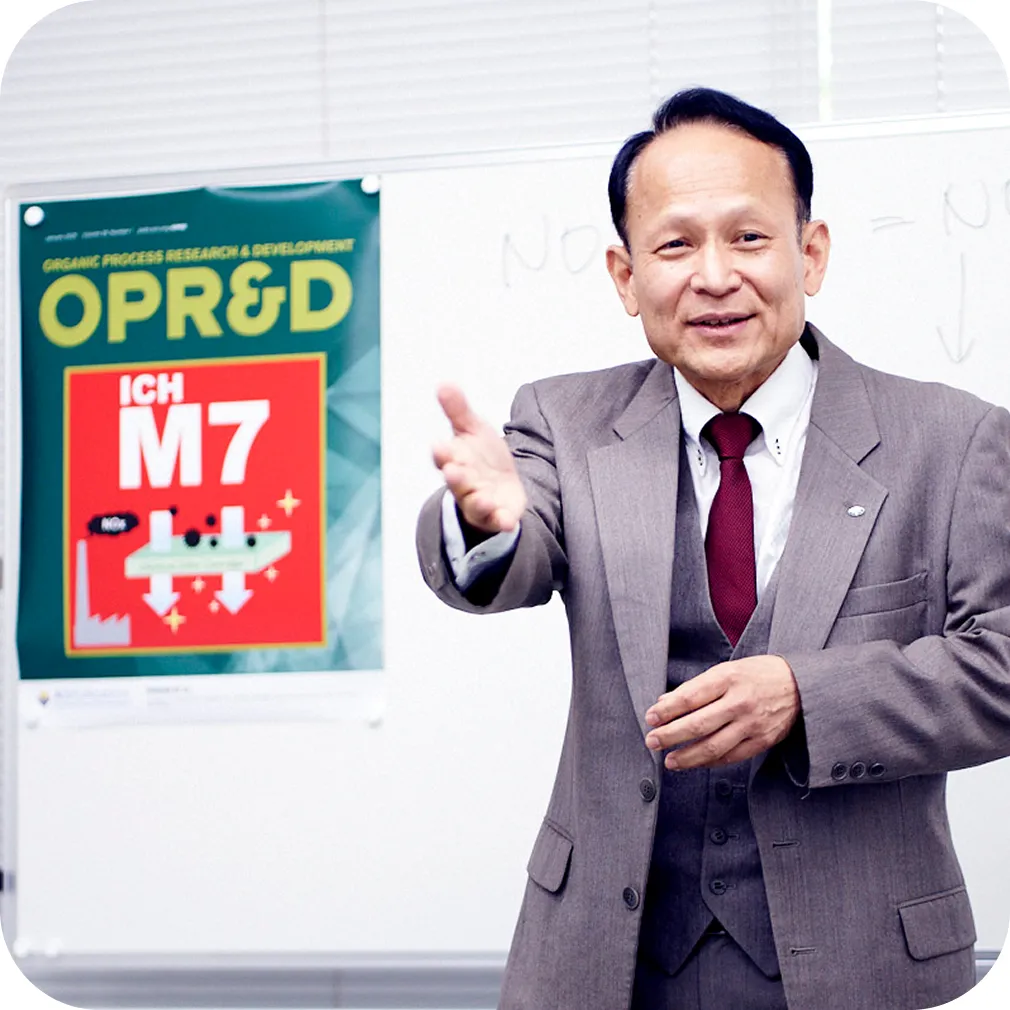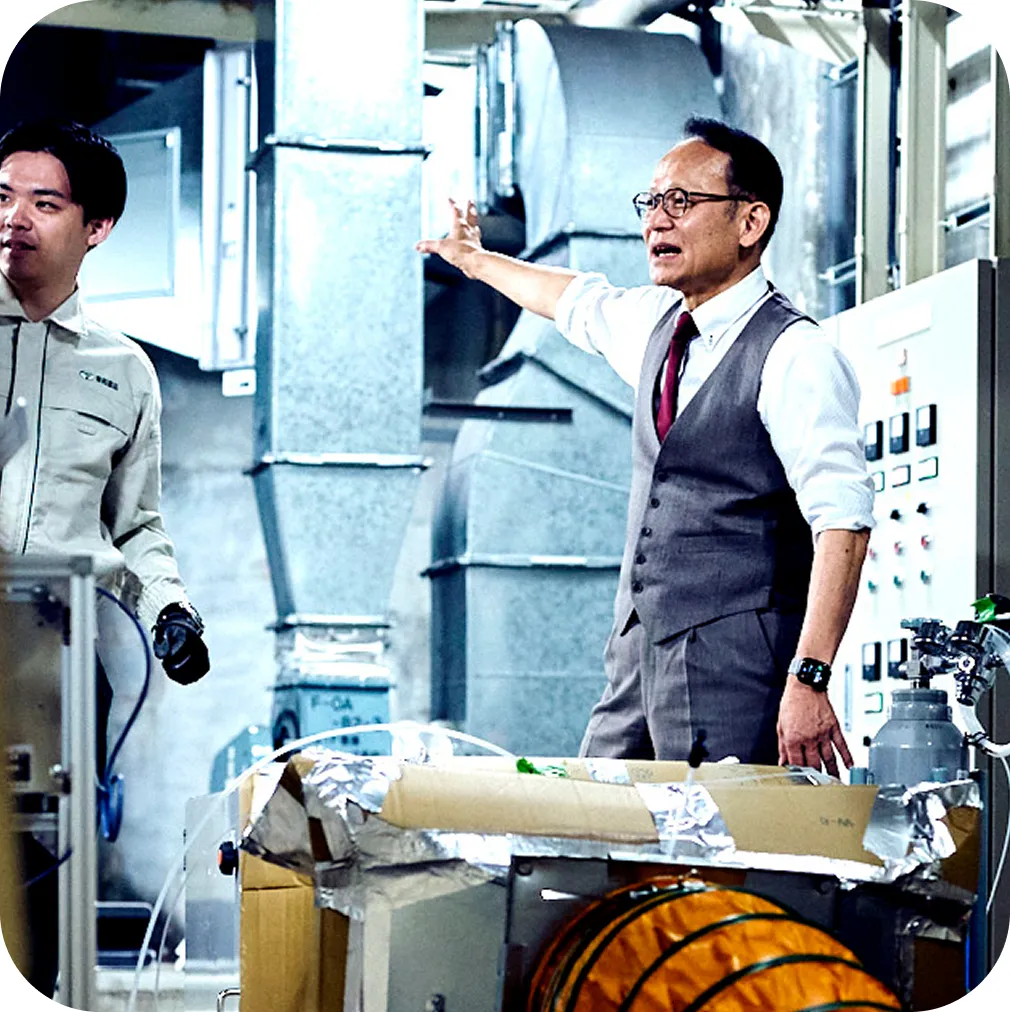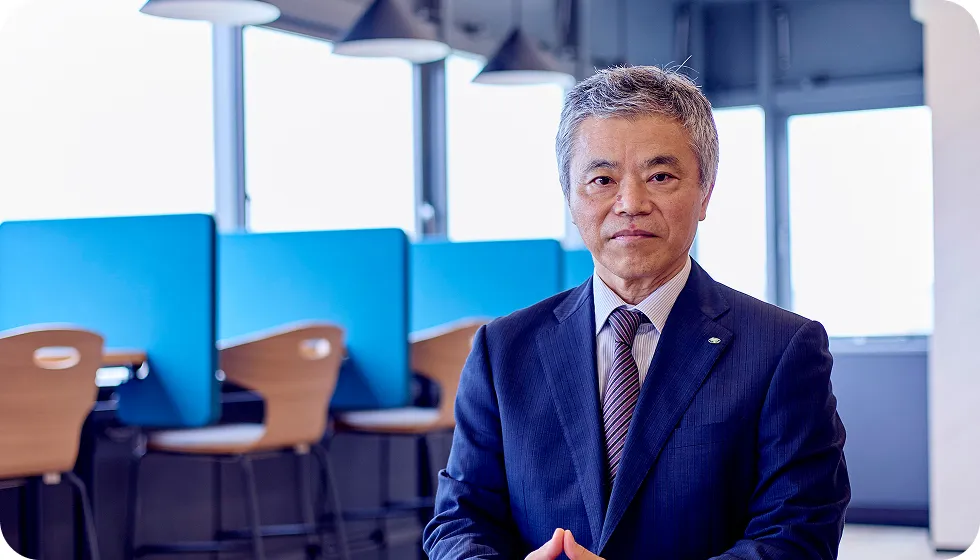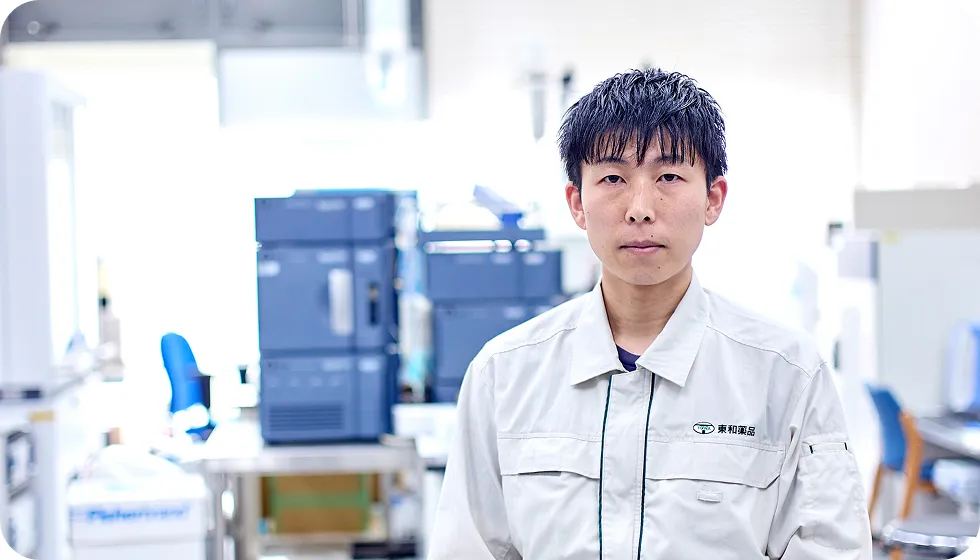Interview


Aiming to Resolve Risks Associated with Pharmaceutical Components (Active Pharmaceutical Ingredients, Excipients)
Guided by My Intuition as a Chemist and a Sense of Responsibility I Must Fulfill
Shortly after joining Towa Pharmaceutical, I came across the European Medicines Agency (EMA) report warning that “N-nitrosodimethylamine (NDMA), suspected of being carcinogenic, had been found in antihypertensive drugs.”
At that moment, I intuitively realized that “contamination with nitrosoamines could potentially spread beyond specific drugs to numerous pharmaceutical products.” Although the presence of extremely low levels does not immediately cause health damage, I could not possibly overlook the idea of “continuing to manufacture and sell pharmaceuticals that might threaten people's health without implementing solutions.”

The Presence of Nitrosoamines in Pharmaceuticals Directly Threatens Human Health
Generic drug manufacturers supply numerous medications to the market. Therefore, it can also be said that “they manufacture and sell many drugs where nitrosoamine contamination is a concern.”
Convinced that “implementing measures against nitrosoamine contamination leads to the provision of safe and reliable pharmaceuticals,” we began investigating the cause in close collaboration with Ms. Kondo (analytical researcher).
The gradual expansion of our team members, the acquisition of the latest analytical instruments, and the establishment of a collaborative framework with the manufacturing department were all made possible by President Yoshida's decisive leadership.

With the Cause Identified, We Are Driven to Develop a Solution Ourselves
In 2019, following instructions from Japan's Ministry of Health, Labour and Welfare, we conducted detailed analyses of metformin preparations manufactured at our Yamagata and Osaka plants. As a result, NDMA contamination exceeding the control limit (0.043 ppm) was detected in 1.9% of all batches, prompting an immediate recall. The fact that all recalled products were manufactured at the Osaka plant led to the realization that nitrogen oxides (NOx) in the air were a contributing factor to nitrosation and prompted a thorough investigation into the cause. After conducting various verification experiments to confirm the findings, a paper attributing NOx as a contributing factor to nitrosation was submitted to the American Chemical Society's OPR&D journal and published in the November 2023 issue (with approximately 22,000 downloads as of September 2025).
Immediately after publication, President Yoshida encouraged me, saying, “It's unlike you, Dr. Uchikawa, not to find a solution.” This ignited my curiosity. Guided by the principle that “One twist, and someone nearby will notice. Two twists, and someone in the world will notice. Three twists, and no one will notice,” I persevered through daily trial and error. With vast amounts of data spread before me, I thought relentlessly until I finally arrived at the solution.

Towa Pharmaceutical's Mission to Safeguard Global Health
Science offers the profound satisfaction of thinking for oneself, verifying for oneself, and obtaining results for oneself. I am proud that so many colleagues sharing the same aspiration—to deliver safe and secure medicines as quickly as possible to bring smiles to patients suffering from illness and their families—have participated in this project while juggling multiple responsibilities.
Our goal is to widely disseminate the numerous discoveries and experimental findings we have gained to date, ensuring that “people around the world can obtain safe and reliable medications anytime, anywhere.” To fulfill our mission and responsibility as a generic drug manufacturer, Towa Pharmaceutical will continue to take on challenges without hesitation.

(Interviewed in June 2025; data updated September 2025)
Interview





